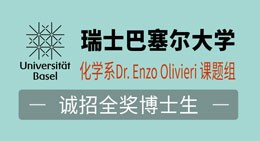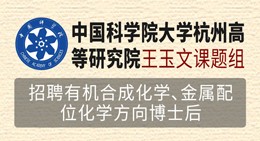当前位置:
X-MOL 学术
›
Biomolecules
›
论文详情
Our official English website, www.x-mol.net, welcomes your
feedback! (Note: you will need to create a separate account there.)
Cerevisterol Alleviates Inflammation via Suppression of MAPK/NF-κB/AP-1 and Activation of the Nrf2/HO-1 Signaling Cascade.
Biomolecules ( IF 4.8 ) Pub Date : 2020-01-29 , DOI: 10.3390/biom10020199
Md Badrul Alam 1, 2 , Nargis Sultana Chowdhury 3 , Md Hossain Sohrab 4 , Md Sohel Rana 5 , Choudhury Mahmood Hasan 6 , Sang-Han Lee 1, 2, 7
Biomolecules ( IF 4.8 ) Pub Date : 2020-01-29 , DOI: 10.3390/biom10020199
Md Badrul Alam 1, 2 , Nargis Sultana Chowdhury 3 , Md Hossain Sohrab 4 , Md Sohel Rana 5 , Choudhury Mahmood Hasan 6 , Sang-Han Lee 1, 2, 7
Affiliation
As part of our continuous effort to find potential anti-inflammatory agents from endophytic fungi, a Fusarium solani strain, isolated from the plant Aponogeton undulatus Roxb., was investigated. Cerevisterol (CRVS) was identified from endophytic fungi, a Fusarium solani strain, and moreover exhibited anti-inflammatory activity. However, the underlying mode of action remains poorly understood. The aim of this study is to reveal the potential mechanisms of CRVS against inflammation on a molecular level in LPS-activated RAW 264.7 peritoneal macrophage cells. CRVS was isolated from F. solani and characterized based on spectral data analysis. The MTT assay was performed to measure cell viability in CRVS-treated macrophages. Anti-inflammatory activity was assessed by measurement of nitric oxide (NO) and prostaglandin E2 (PGE2) levels, as well as the production of various cytokines, such as tumor necrosis factor-α (TNF-α), interleukin-1β (IL-1β), and -6 (IL-6) in LPS-stimulated macrophages. RT-PCR and immunoblotting analyses were done to examine the expression of various inflammatory response genes. A reporter gene assay was conducted to measure the level of nuclear factor kappa-light-chain-enhancer of activated B cells (NF-κB) and activator protein-1 (AP-1) transactivation. CRVS suppresses the LPS-induced production of NO and PGE2, which is a plausible mechanism for this effect is by reducing the expression of iNOS and COX-2. CRVS also decreases the expression of pro-inflammatory cytokines, such as TNF-α, IL-6, and IL-1β. CRVS halted the nuclear translocation of NF-κB by blocking the phosphorylation of inhibitory protein κBα (IκBα) and suppressing NF-κB transactivation. The mitogen-activated protein kinases (MAPK) signaling pathways are also suppressed. CRVS treatment also inhibited the transactivation of AP-1 and the phosphorylation of c-Fos. Furthermore, CRVS could induce the nuclear translocation of nuclear factor erythroid 2-related factor 2 (Nrf2) by down-regulating Kelch-like ECH-associated protein 1 (Keap-1) and up-regulating hemeoxygenases-1 (HO-1) expression. The results suggest that CRVS acts as a natural agent for treating inflammatory diseases by targeting an MAPK, NF-κB, AP-1, and Nrf2-mediated HO-1 signaling cascade.
中文翻译:

cerevisterol通过抑制MAPK /NF-κB/ AP-1和激活Nrf2 / HO-1信号级联来减轻炎症。
作为我们从内生真菌中寻找潜在抗炎药的持续努力的一部分,研究了从植物Aponogeton undulatus Roxb。分离出的枯萎镰刀菌菌株。从内生真菌,茄枯萎病菌中鉴定出了cerevisterol(CRVS),并且还表现出抗炎活性。但是,基本的作用方式仍然知之甚少。这项研究的目的是揭示LPS激活的RAW 264.7腹膜巨噬细胞在分子水平上CRVS抗炎症的潜在机制。从茄形假丝酵母中分离出CRVS,并基于光谱数据分析对其进行表征。进行MTT测定以测量CRVS处理的巨噬细胞中的细胞活力。通过测量一氧化氮(NO)和前列腺素E2(PGE2)的水平来评估抗炎活性,以及在LPS刺激的巨噬细胞中产生各种细胞因子,例如肿瘤坏死因子-α(TNF-α),白介素-1β(IL-1β)和-6(IL-6)。进行RT-PCR和免疫印迹分析以检查各种炎症反应基因的表达。进行了记者基因检测,以测量活化B细胞(NF-κB)和活化蛋白-1(AP-1)反式激活的核因子κ-轻链增强子的水平。CRVS抑制LPS诱导的NO和PGE2的产生,这可能是通过降低iNOS和COX-2的表达来实现的。CRVS还降低了促炎性细胞因子(例如TNF-α,IL-6和IL-1β)的表达。CRVS通过阻断抑制性蛋白κBα(IκBα)的磷酸化并抑制NF-κB的转录激活来阻止NF-κB的核移位。丝裂原激活的蛋白激酶(MAPK)信号通路也被抑制。CRVS处理还抑制了AP-1的反式激活和c-Fos的磷酸化。此外,CRVS可以通过下调Kelch样ECH相关蛋白1(Keap-1)和上调血红素加氧酶1(HO-1)的表达来诱导核因子红系2相关因子2(Nrf2)的核易位。 。结果表明,CRVS通过靶向MAPK,NF-κB,AP-1和Nrf2介导的HO-1信号级联反应,充当治疗炎症性疾病的天然药物。CRVS可以通过下调Kelch样ECH相关蛋白1(Keap-1)和上调血红素加氧酶1(HO-1)的表达来诱导核因子红系2相关因子2(Nrf2)的核易位。结果表明,CRVS通过靶向MAPK,NF-κB,AP-1和Nrf2介导的HO-1信号级联反应,充当治疗炎症性疾病的天然药物。CRVS可以通过下调Kelch样ECH相关蛋白1(Keap-1)和上调血红素加氧酶1(HO-1)的表达来诱导核因子红系2相关因子2(Nrf2)的核易位。结果表明,CRVS通过靶向MAPK,NF-κB,AP-1和Nrf2介导的HO-1信号级联反应而充当治疗炎性疾病的天然药物。
更新日期:2020-01-29
中文翻译:

cerevisterol通过抑制MAPK /NF-κB/ AP-1和激活Nrf2 / HO-1信号级联来减轻炎症。
作为我们从内生真菌中寻找潜在抗炎药的持续努力的一部分,研究了从植物Aponogeton undulatus Roxb。分离出的枯萎镰刀菌菌株。从内生真菌,茄枯萎病菌中鉴定出了cerevisterol(CRVS),并且还表现出抗炎活性。但是,基本的作用方式仍然知之甚少。这项研究的目的是揭示LPS激活的RAW 264.7腹膜巨噬细胞在分子水平上CRVS抗炎症的潜在机制。从茄形假丝酵母中分离出CRVS,并基于光谱数据分析对其进行表征。进行MTT测定以测量CRVS处理的巨噬细胞中的细胞活力。通过测量一氧化氮(NO)和前列腺素E2(PGE2)的水平来评估抗炎活性,以及在LPS刺激的巨噬细胞中产生各种细胞因子,例如肿瘤坏死因子-α(TNF-α),白介素-1β(IL-1β)和-6(IL-6)。进行RT-PCR和免疫印迹分析以检查各种炎症反应基因的表达。进行了记者基因检测,以测量活化B细胞(NF-κB)和活化蛋白-1(AP-1)反式激活的核因子κ-轻链增强子的水平。CRVS抑制LPS诱导的NO和PGE2的产生,这可能是通过降低iNOS和COX-2的表达来实现的。CRVS还降低了促炎性细胞因子(例如TNF-α,IL-6和IL-1β)的表达。CRVS通过阻断抑制性蛋白κBα(IκBα)的磷酸化并抑制NF-κB的转录激活来阻止NF-κB的核移位。丝裂原激活的蛋白激酶(MAPK)信号通路也被抑制。CRVS处理还抑制了AP-1的反式激活和c-Fos的磷酸化。此外,CRVS可以通过下调Kelch样ECH相关蛋白1(Keap-1)和上调血红素加氧酶1(HO-1)的表达来诱导核因子红系2相关因子2(Nrf2)的核易位。 。结果表明,CRVS通过靶向MAPK,NF-κB,AP-1和Nrf2介导的HO-1信号级联反应,充当治疗炎症性疾病的天然药物。CRVS可以通过下调Kelch样ECH相关蛋白1(Keap-1)和上调血红素加氧酶1(HO-1)的表达来诱导核因子红系2相关因子2(Nrf2)的核易位。结果表明,CRVS通过靶向MAPK,NF-κB,AP-1和Nrf2介导的HO-1信号级联反应,充当治疗炎症性疾病的天然药物。CRVS可以通过下调Kelch样ECH相关蛋白1(Keap-1)和上调血红素加氧酶1(HO-1)的表达来诱导核因子红系2相关因子2(Nrf2)的核易位。结果表明,CRVS通过靶向MAPK,NF-κB,AP-1和Nrf2介导的HO-1信号级联反应而充当治疗炎性疾病的天然药物。

































 京公网安备 11010802027423号
京公网安备 11010802027423号